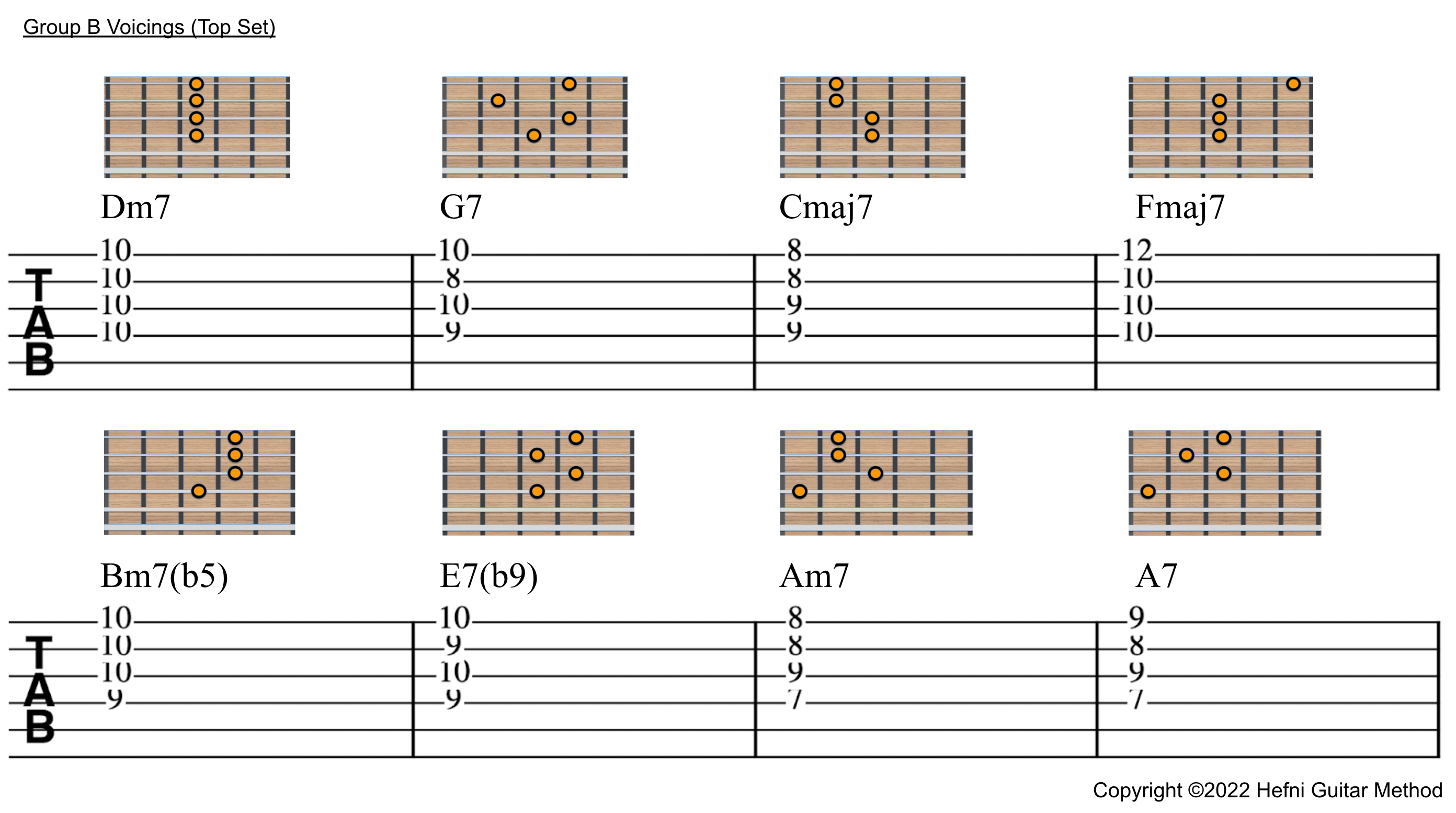Welcome to the Jazz Chords Workshop Lesson 6.
For this week’s lesson, we introduce the upper structure of Group B Voicings for Jazz. These voicings span the 7th to 12th frets. As before, we are sticking to one key (C major) in order to learn all possible voicing groups in the various fretboard locations. This will give us lots of options to voice the chords in the same key.
Click the video below to watch the lesson.
Learning Aids
The chord shapes and TABs for this lesson are provided as follows.

Primary Takeaways
The main takeaways of lesson 6 are as follows:
1. This week’s chord voicing group is the upper structure of the Group B voicings.
This week’s voicings are centred around the 7th to 12th frets on the top set of four strings. We want to keep them to the same area because they will ‘sit’ within the scale box or fingering pattern. This will inculcate familiarity between scalar and chordal structures in our learning.
2. The Dm7 chord and the Bm7(b5) chords differ by one note.
Similar to the middle group voicings, the major and minor II V I chords on the top strings also differ from each other by a single note. You will notice this in all four group voicings on the top strings. Use this to help memorize the chord learning.
3. The E7(b9) chord shape for the top group will not change
The E7(b9) chord shape in bar 5 is exactly the same shape as the E7(b9) chord in Group A Voicings in the previous lesson. Although the chords are on different frets, they both have the same shape and are both called E7(b9). That means the E7(b9) chord has the same shape regardless of positioning and voicing on the top 4 strings. This phenomenon is similar as the middle group voicings and will remain similar as long as they belong to the same string set.
Tips for better learning
The learning tips and strategies introduced in the previous group of string can still be applied here. (if needed)
-
-
-
- If you have trouble remembering the Bm7(b5) chord, always go back to the Dm7 chord and figure out which is the single note that is different.
- Remember that E7(b9) chord shape is always the same in the same string set.
- Practice to a metronome or backing track once you’re comfortable with the voicings.
- Find ways to self-motivate
- Self monitor our learning
-
-
Learning Takes Time (so take it slow)
Every once in a while, I like to remind my students that learning guitar is a lifelong pursuit and not a sprint. Therefore, it is useful to remember that some knowledge especially that which are new and complicated, will require time to assimilate, both in our minds as well as in our muscle memory in our fingers. If ever we end up feeling frustrated that we are not ‘getting’ it right, be patient and persevere. Eventually, the exercises will get easier. This is a sure-fire indicator that the learning is sinking in.
There are also higher levels of learning which we will get into in a later article.
Follow us on Facebook, Instagram and Youtube.
